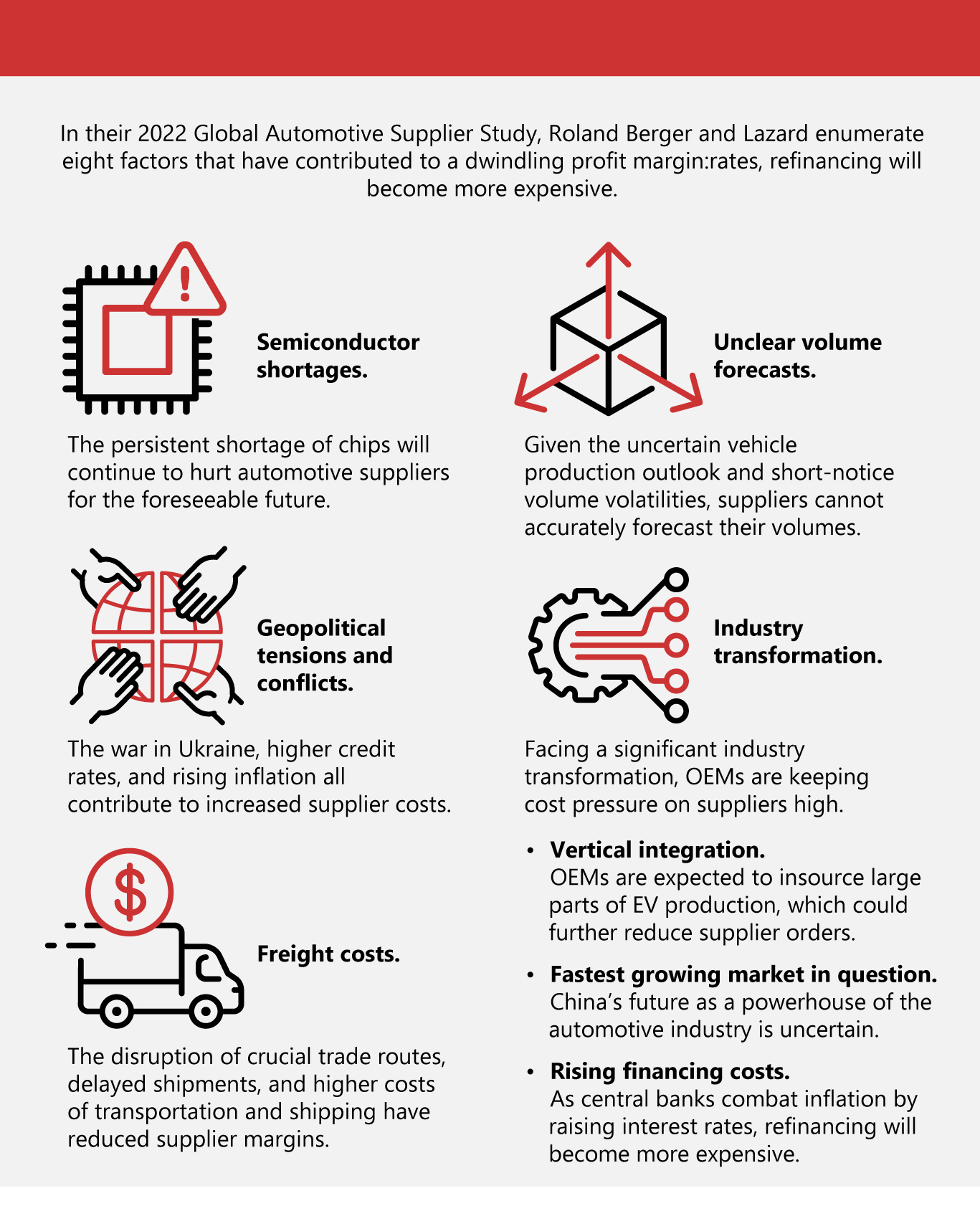Connect With Us


While the demand and sales for newer-generation semiconductor chips are declining, older-generation semiconductors are still in short supply. Find out how the automotive industry can get past this roadblock.
The chips are still down for the automotive industry, making the road to recovery fraught with obstacles. In this article, we share key findings from “Semiconductor shortage: A different kind of trouble ahead,” a study by global management consultancy firm Roland Berger. Learn what factors have contributed to this imbalance and how automotive OEMs can navigate yet another perfect storm of supply chain issues.
A tale of two chips
When the COVID-19 pandemic hit, everybody had to do everything from home—shop, work, pay bills, eat, and entertain themselves. As the demand for consumer electronics such as computers, televisions, and household appliances skyrocketed, the semiconductor industry had to contend with pandemic-induced supply chain woes, geopolitical conflicts, and extreme weather conditions.
(Also read: Challenges and Changes for Global Supply Chains)
Auto manufacturers were hit as well, scrambling to acquire chips that are vital to vehicle safety, connectivity, and infotainment. A vehicle can require more than 3,000 chips for everything from power steering to in-car dials.
“The problem is even if that 10-cent chip is missing, you can’t sell your $30,000 car,” Gaurav Gupta, a semiconductor analyst at research and consulting firm Gartner, shared with CNBC last February 2021.
(Also read: Chip Shortage Puts the Auto Industry on Edge)
By the second half of 2022, the demand for consumer electronics had declined. There is now an oversupply of the leading-edge and advanced-node semiconductors used in high-tech gadgets. There is a surplus of nearly 50% of the chips needed in consumer electronics, almost 40% in computers, and 34% in telecommunications.
Supply constraints on “legacy nodes”—the less sophisticated, older-generation semiconductors—persist, and continue to wreak havoc on the car-making industry. Sixty-two percent of the automotive market and 57% of the industrial market rely on these older, more specialized chips, which industry analysts predict will remain in short supply for the foreseeable future.
"We are still seeing a structural shortage of analog semiconductors and microcontrollers that will last several years,” Falk Meissner, Partner at Roland Berger, shared.
“Lower demand for computers and consumer electronics does provide some relief for the semiconductor industry. But it will make capacity and inventory planning even more difficult for both, the manufacturers of microchips and the companies that use them," Meissner continued.
Bottlenecks and bottom lines
Automotive suppliers continue to face disruptions and challenges, from rising material costs to skyrocketing energy prices to supply bottlenecks. According to Roland Berger, the global production volume of passenger vehicles is still below pre-crisis levels.
In their 2022 Global Automotive Supplier Study, Roland Berger and Lazard enumerate eight factors that have contributed to a dwindling profit margin:

(Also read: From Automakers to Chip Makers: Will DIY Save the OEMs?)
Laws provide little relief for legacy chips
For the past two years, the chip shortage has made headlines all over the world, but little focus has been given to overcome the shortage of “legacy node” chips that are vital to automotive and industrial companies.
Last August 2022, the United States CHIPS and Science Act was signed into law to bolster local semiconductor research, development, and production. The CHIPS Act provides USD 39 billion for manufacturing incentives, but only USD 2 billion, or 5% of that amount, has been earmarked for legacy chips.
(Also read: The Race to Tech Supremacy Heats up with the U.S. CHIPS Act)
With the European Chip Act, the European Union (EU) hopes to increase its global market share of chip production from 10% to 20% by 2030, making it more resilient to supply chain disruptions and strengthening its research and technology leadership.
The European Chip Act will mobilize more than EUR 43 billion of public and private investments to develop next-generation technologies, address the skills shortage, and prevent, prepare, anticipate, and quickly respond to future supply chain disruptions. But, according to Roland Berger, “The unclear budgets and guidance found in the European Chips Act will have little impact on the ongoing legacy node shortage affecting automotive and industrial companies.”
Reformulating chip inventory management
“Automotive and industrial companies need to adapt to the market practices of the electronics and semiconductor industry in order to secure their chip supply,” shared Meissner.
“That will include always using the latest generation of chips and having a risk-adjusted procurement policy. Companies cannot just wait for the chip shortage to pass—they will need to be very proactive themselves,” Meissner continued.
The legacy chip shortage is an opportunity for companies to reduce legacy semiconductor content and shift to modern technology nodes. By employing a multi-sourcing supply strategy, forging partnerships with semiconductor companies, and walking the tightrope between optimizing inventories and weathering supply bottlenecks, companies can overcome hurdles now and in the future.
As one of the Top 25 EMS companies in the world, IMI has over 40 years of experience in providing electronics manufacturing and technology solutions.
We are ready to support your business on a global scale.
Our proven technical expertise, worldwide reach, and vast experience in high-growth and emerging markets make us the ideal global manufacturing solutions partner.
Let's work together to build our future today
